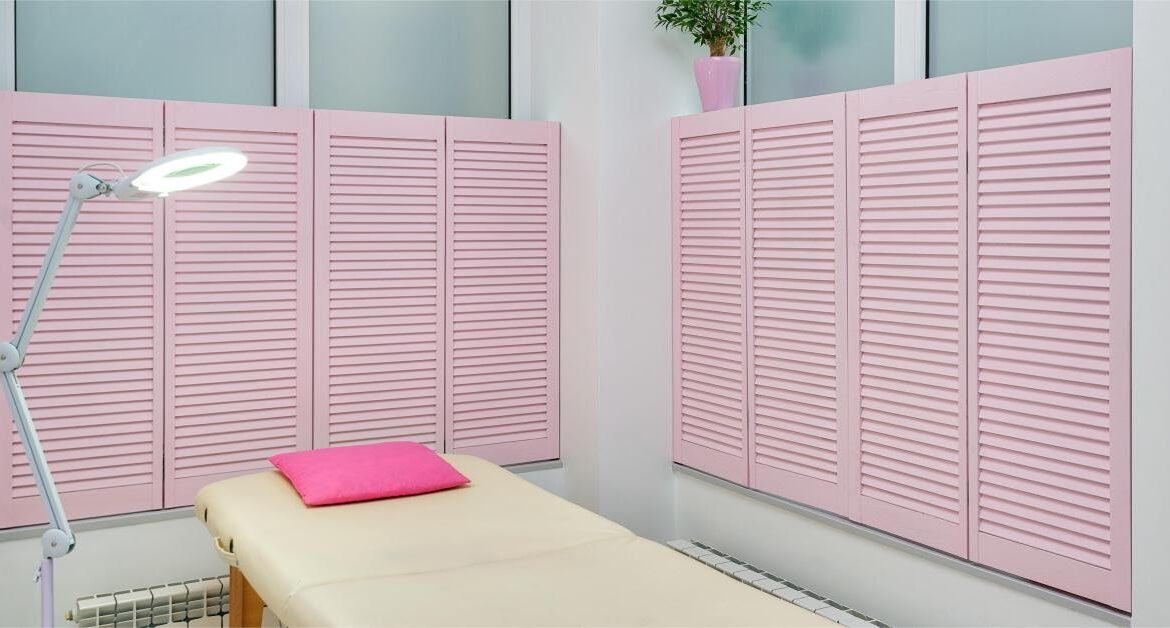Interior plantation shutters are window treatments with adjustable louvers mounted within a frame. These shutters can be made from various materials, including wood, composite, and vinyl. They are designed to fit inside the window frame, and when closed, they provide a complete barrier against light, noise, and heat.
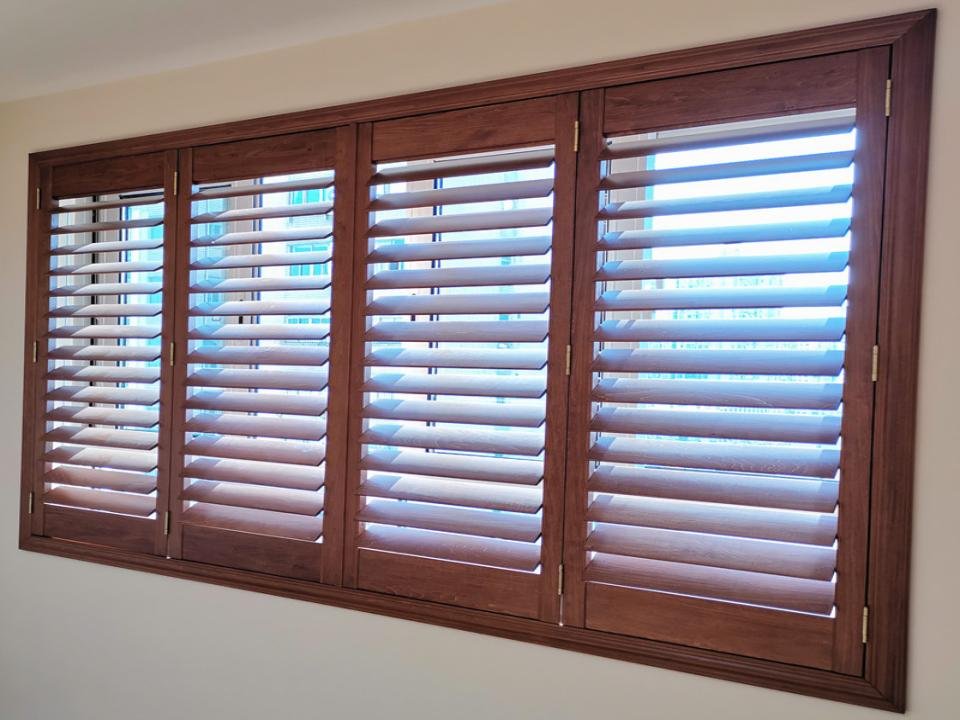
Benefits of Interior Plantation Shutters
Interior plantation shutters offer a range of benefits to homeowners, including:
- Improved Insulation: Plantation shutters provide an extra layer of insulation, helping to keep your home cooler in the summer and warmer in the winter. This can reduce energy bills and create a more comfortable living environment.
- Enhanced Privacy: Plantation shutters can be adjusted to control the light and visibility entering your home. This allows you to enjoy natural light while maintaining your privacy.
- Easy to Clean: Unlike traditional blinds or curtains, plantation shutters are easy to clean and maintain. Wipe them down with a damp cloth to keep them looking their best.
- Increased Home Value: Interior plantation shutters are a stylish and functional addition to any home. They can add value to your property, making it more attractive to potential buyers.
Types of Interior Plantation Shutters
Plantation shutters come in various styles, each with unique features and benefits. Here are some of the most popular types of interior plantation shutters:
Traditional plantation shutters
Traditional plantation shutters are the original style of plantation shutters. They feature wide louvers that can be adjusted to control light and ventilation. These shutters are typically mounted inside the window frame and can be made from various materials, including wood, vinyl, and composite materials.
California shutters
California shutters, or hybrid shutters, combine traditional plantation shutters and blinds. They feature narrow, adjustable louvers that can be tilted to control the room’s light and privacy. These shutters are often made from wood or a wood composite material.
Full-height shutters
Full-height shutters cover the entire window height and are ideal for taller windows or doors. They can be designed with a single panel or multiple panels that can be opened and closed independently. Full-height shutters are typically made from wood or wood composite materials.
Tier-on-tier shutters
Tier-on-tier shutters feature two sets of shutters that can be operated independently. This allows for greater flexibility in controlling light and privacy. These shutters are typically mounted inside the window frame and can be made from various materials, including wood, vinyl, and composite materials.
Cafe-style shutters
Cafe-style shutters cover only the window’s lower half, exposing the upper half. They are often used in living rooms and bedrooms to provide privacy while allowing natural light to enter the room. Cafe-style shutters are typically made from wood or wood composite materials.
Each type of interior plantation shutter offers unique benefits and can be customized to fit your specific needs and preferences. Consider the size and shape of your windows, your desired level of privacy and light control, and your overall aesthetic when selecting the correct type of shutter for your home.
Materials Used in Interior Plantation Shutters
Interior plantation shutters are available in different materials that vary in durability, finish, and price. Here are the most common materials used in interior plantation shutters:
Wood
Wood is a popular material for interior plantation shutters due to its natural beauty and durability. Different types of wood, such as basswood, oak, and poplar, are used for shutters. Basswood is the most popular wood used for plantation shutters because of its lightness, durability, and fine grain. Oak and poplar are also commonly used but denser and heavier than basswood.
Vinyl
Vinyl plantation shutters are affordable, durable, and easy to clean, which makes them a popular choice among homeowners. Vinyl shutters are also resistant to moisture and humidity, which makes them suitable for high-humidity areas such as bathrooms and kitchens.
Composite wood
Composite plantation shutters are typically made of engineered wood or medium-density fiberboard (MDF) covered with a polypropylene coating or a high-quality vinyl wrap. Composite wood shutters are durable, moisture-resistant, and affordable.
Faux wood
Faux wood plantation shutters are typically made from a composite material that combines PVC and a wood or MDF core. The core is covered with a PVC or vinyl coating that looks like natural wood. They are a cost-effective alternative to natural wood shutters and are also moisture-resistant, making them suitable for high-humidity areas.

When selecting the material for your interior plantation shutters, consider your budget, the style of your home, and the environment in which the shutters will be installed. Each material has advantages and disadvantages, so weigh the pros and cons before deciding.
Customization Options for Interior Plantation Shutters
When it comes to interior plantation shutters, one of the most significant advantages is the ability to customize them to fit the style and functionality of your space. Here are some of the critical customization options to consider:
Color and Finish Options
One of the most significant benefits of plantation shutters is that they can be customized to match the color and finish of your existing décor. Most manufacturers offer various color options, from classic whites to natural wood stains to bold colors. Additionally, you can choose from different finishes, such as matte, satin, or glossy.

Louver Size Options
Another important customization option is the size of the louvers, which are the horizontal slats that open and close to control light and privacy. Louvers typically come in a range of sizes, from 2.5 inches to 4.5 inches, with larger sizes offering more light control and visibility when open.
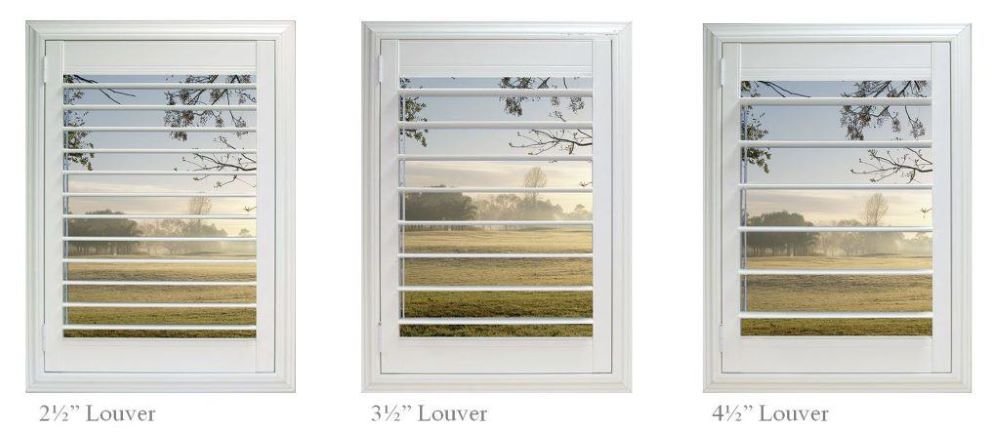
Tilt Rod Options
The tilt rod is the mechanism that controls the movement of the louvers. Traditionally, tilt rods were located in the center of the shutter panel, but modern designs offer options for hidden or offset tilt rods. Hidden tilt rods provide a cleaner, more streamlined look, while offset tilt rods are located to one side of the panel and offer a more traditional appearance.
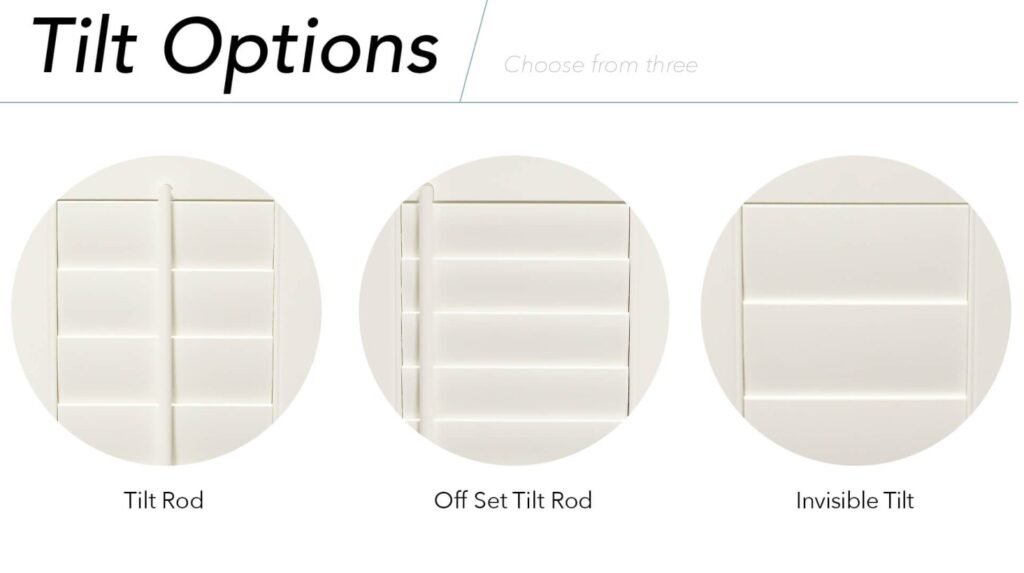
Mounting Options
Plantation shutters can be mounted in several ways, depending on your window style and preferences. The most common mounting options are inside mount and outside mount. Inside-mount shutters are installed inside the window frame, while outside-mount shutters are mounted outside the window frame. Other mounting options include double-hung, bi-fold, and sliding panels.

By selecting suitable customization options, you can create interior plantation shutters that complement your existing décor and provide the functionality and privacy you desire.
Installation Process for Interior Plantation Shutters
Interior plantation shutters can be installed professionally or as a DIY project. While professional installation is recommended for the best results, some homeowners may choose to install them independently. Here are some tips for both professional and DIY installation:
Professional Installation vs. DIY Installation
Professional installation involves hiring a window treatment specialist to measure, order, and install your interior plantation shutters. This option guarantees proper measurements, correct structure, and a warranty for the work done. It is recommended for those who need to be more handy or experienced in home renovation projects.
DIY installation involves measuring, ordering, and installing the shutters yourself. This option is ideal for those who are handy and experienced in home renovation projects. It can also save on installation costs, but if not done correctly, it can lead to additional expenses and complications.
Steps Involved in Professional Installation
If you choose to have your interior plantation shutters professionally installed, the following steps are typically involved:
- Consultation: The window treatment specialist will visit your home to evaluate the space and discuss your options for interior plantation shutters.
- Measuring: The specialist will take precise window measurements to ensure the shutters fit properly.
- Ordering: The specialist will order the shutters based on the measurements taken.
- Installation: Once the shutters arrive, the specialist will install them, ensuring they are level, secure, and operating correctly.
Tips for DIY Installation
If you choose to install your interior plantation shutters yourself, here are some tips to help you along the way:
- Measure twice: It is essential to take precise measurements of the window frame to ensure the shutters fit correctly.
- Use proper tools: The right tools can significantly affect the installation process. This includes a drill, screws, and a level.
- Follow the manufacturer’s instructions carefully to ensure the shutters are installed correctly.
- Ask for help: Installing interior plantation shutters can be challenging, so don’t hesitate to ask for help from a friend or family member.
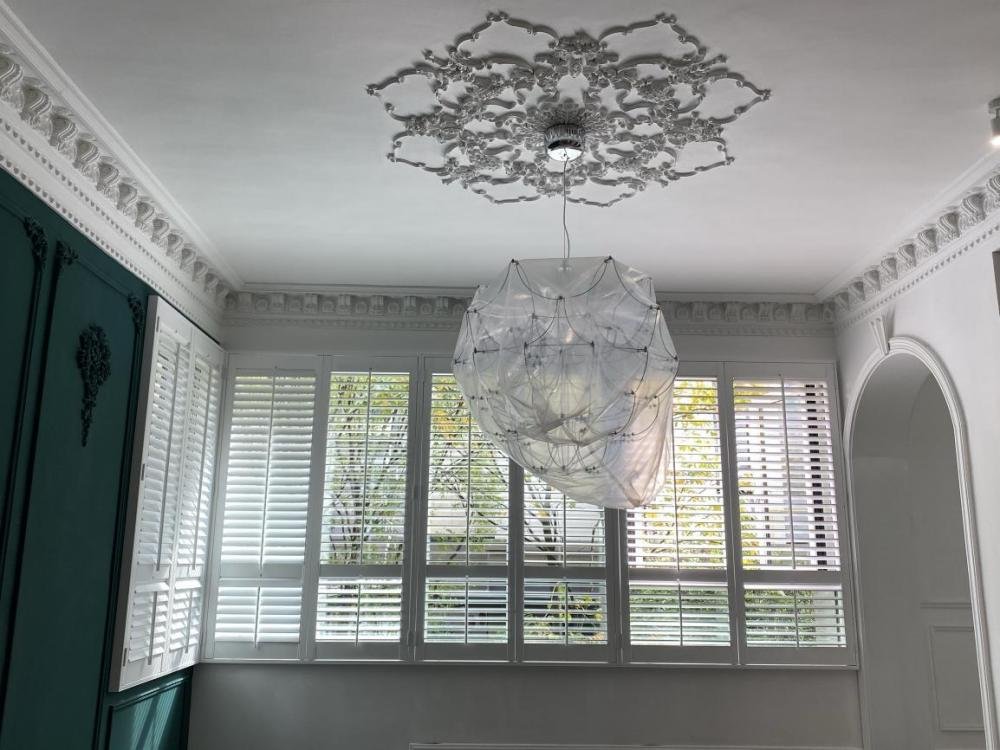
Maintenance and Cleaning of Interior Plantation Shutters
While interior plantation shutters are low-maintenance and durable window coverings, proper cleaning and maintenance can ensure their longevity and keep them looking new for years to come. In this chapter, we’ll provide some tips on cleaning and maintaining your interior plantation shutters.
Cleaning Tips for Different Materials
Wood plantation shutters are beautiful, natural, and timeless. They require special care to prevent warping and discoloration. Follow these tips to clean your wood plantation shutters:
- Dust your shutters regularly using a soft cloth or a vacuum cleaner with a soft brush attachment.
- Use a damp cloth with mild soap and water for tougher dirt and stains. Avoid using abrasive or chemical cleaners.
- Dry the shutters entirely after cleaning to prevent moisture damage.
Vinyl plantation shutters are durable, easy to clean, and resistant to moisture and humidity. Here are some tips for cleaning your vinyl plantation shutters:
- Dust your shutters regularly using a soft cloth or a vacuum cleaner with a soft brush attachment.
- Use a damp cloth with mild soap and water for tougher dirt and stains. You can also use a non-abrasive household cleaner.
- Avoid using abrasive or chemical cleaners that can damage the vinyl surface.
- Dry the shutters entirely after cleaning to prevent water spots.
Composite wood plantation shutters are a blend of natural wood and synthetic materials. They are low-maintenance and resistant to warping, fading, and cracking. Follow these tips to clean your composite wood plantation shutters:
- Dust your shutters regularly using a soft cloth or a vacuum cleaner with a soft brush attachment.
- Use a damp cloth with mild soap and water for tougher dirt and stains. You can also use a non-abrasive household cleaner.
- Avoid using abrasive or chemical cleaners that can damage the composite wood surface.
- Dry the shutters entirely after cleaning to prevent water spots.

Maintenance Tips to Ensure Longevity
Check the hardware:
- Inspect the hinges, latches, and tilt rods of your plantation shutters regularly to ensure they work correctly. Tighten loose screws or bolts to prevent the shutters from sagging or falling off.
Lubricate the moving parts:
- If you notice any squeaking or resistance while operating your plantation shutters, apply a lubricant to the moving parts to ensure smooth operation.
Protect from direct sunlight:
- Direct sunlight can cause the shutters to fade or warp. To prevent this, close the shutters during the hottest parts of the day, or consider installing UV-blocking window film.
Avoid moisture damage:
- Moisture can cause warping or discoloration in wood or composite wood plantation shutters. Avoid installing them in high-moisture areas such as bathrooms or near humidifiers.
Cost of Interior Plantation Shutters
When considering interior plantation shutters for your home, one of the essential factors to consider is the cost. The cost of interior plantation shutters varies depending on various factors, such as the type of material used, the size of the window, and customization options.
Factors that affect the cost
- Material: The type of material used is one of the primary factors determining the cost of interior plantation shutters. Wood shutters are typically more expensive than vinyl or composite wood shutters.
- Size of the window: The size also affects the cost of interior plantation shutters. More oversized windows will require more materials and labor, which can increase the price.
- Customization options: The cost of interior plantation shutters will increase if you customize them to fit your windows perfectly. Customization options such as louver size, color, and finish can also increase costs.
Comparison with other window treatment options
Compared to other window treatment options, such as curtains and blinds, interior plantation shutters can be more expensive. However, they offer several advantages, such as durability, energy efficiency, and aesthetic appeal, which make them a worthwhile investment.
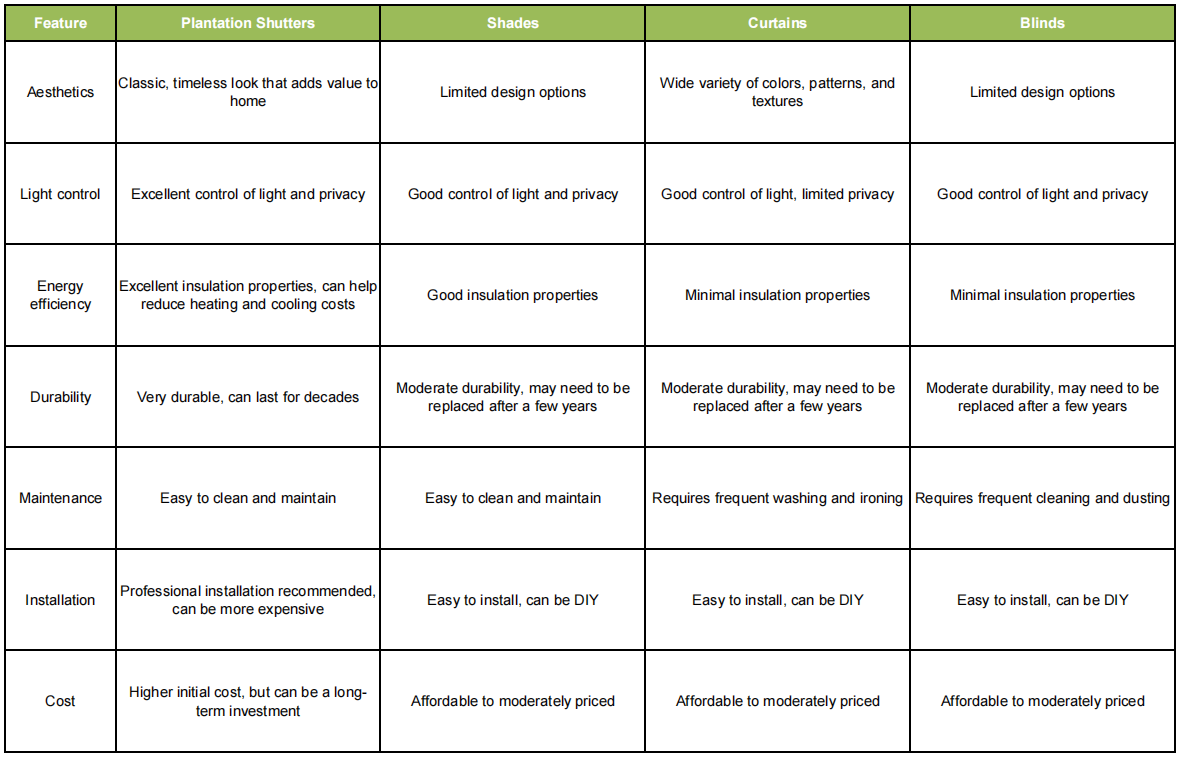
Tips for budget-friendly options
- Choose the suitable material: While wood shutters may be more expensive, vinyl and composite wood shutters are often more affordable options that provide a similar look and feel.
- Standard sizes: Choosing standard sizes for interior plantation shutters can be more cost-effective than customizing them.
- DIY installation: If you have some basic handyman skills, you can save money by installing the shutters rather than hiring a professional.
- Purchase from a reputable supplier: While it may be tempting to opt for a cheaper supplier, it is essential to purchase from a reputable supplier to ensure the quality of the product and avoid any unexpected costs in the future.
In conclusion, interior plantation shutters are an excellent option for those looking to add style and functionality to their windows. With their versatile designs and customization options, they can complement any décor style and provide privacy, light control, and insulation.
When choosing interior plantation shutters, it is essential to consider factors such as material, type, customization options, and installation. By understanding these factors, you can make an informed decision that meets your needs and budget.
Additionally, proper maintenance and cleaning are crucial to ensure the longevity of your shutters. They can last for years with reasonable care, making them a worthwhile investment.
In summary, interior plantation shutters offer a range of benefits and customization options that make them a popular choice among homeowners. By following the tips and guidelines outlined in this article, you can choose and maintain your interior plantation shutters with confidence.

